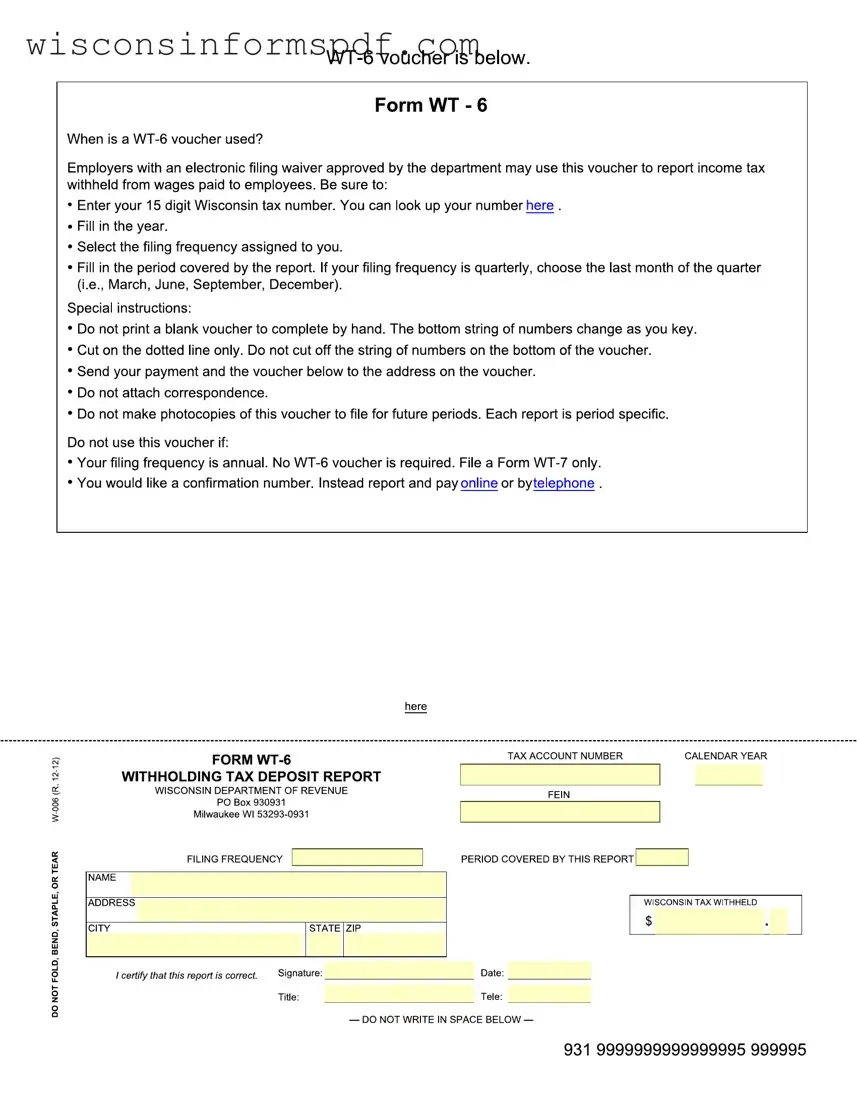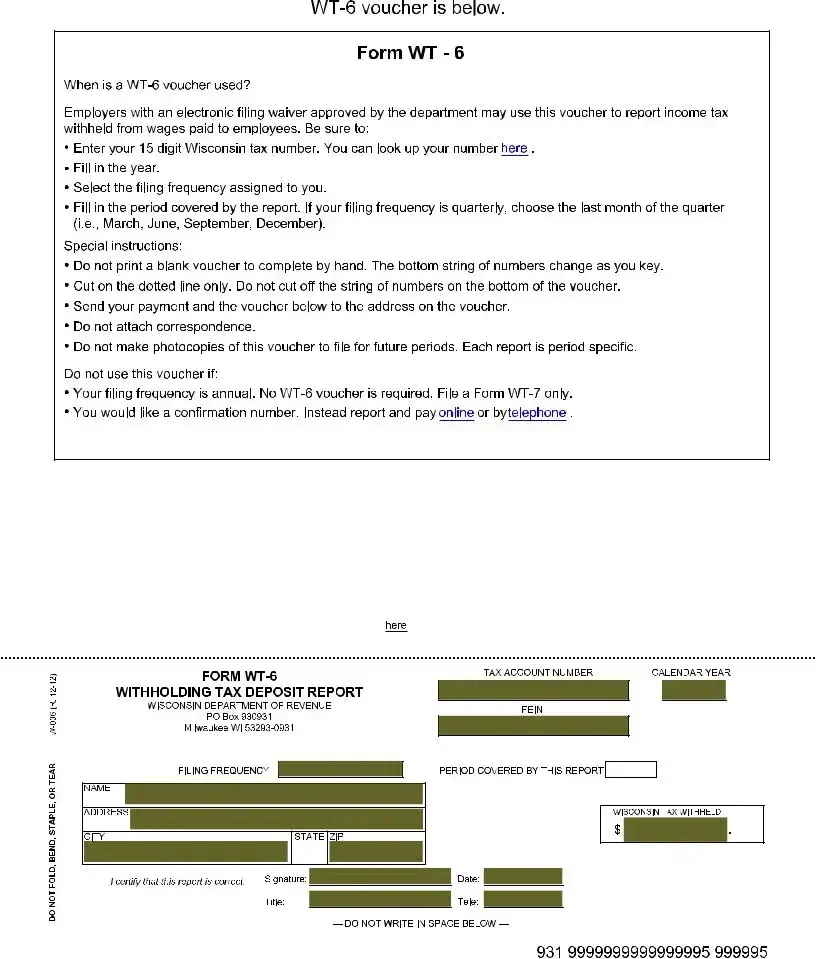The Wisconsin WT-6 Withholding Tax Deposit Report shares similarities with the Federal Form 941, Employer's Quarterly Federal Tax Return. Both forms are used for reporting taxes withheld from employees' wages. While the WT-6 focuses on state income tax withholding specific to Wisconsin, the Federal Form 941 covers withholding of federal income tax, Social Security, and Medicare taxes. Both forms require employers to calculate the total taxes withheld from employees during the reporting period and report any deposits of these taxes.
Similar to the Wisconsin WT-6 is the Form W-2, Wage and Tax Statement, in the sense that both involve wage reporting and tax withholding information. The WT-6 is used by employers to report the total amount of taxes withheld from all employees to the state, whereas the Form W-2 is issued to employees detailing their annual wages and the amount of taxes withheld from their paychecks for that year. Both documents are integral to ensuring correct income tax reporting and compliance.
Another document resembling the Wisconsin WT-6 is the Form W-3, Transmittal of Wage and Tax Statements. The Form W-3 is used to transmit Form W-2s to the Social Security Administration and summarizes the total earnings, Social Security wages, Medicare wages, and withholding for all employees for the year. Though the Form W-3 deals with federal reporting, its function as a summary document mirrors the state-level summary reporting of the WT-6.
The Wisconsin WT-7, Employers Annual Reconciliation of Wisconsin Income Tax Withheld from Wages, is closely related to the WT-6. While the WT-6 is utilized for periodic withholding tax deposits, the WT-7 serves as an annual reconciliation form where employers report the total amounts of Wisconsin income taxes withheld from employees' wages throughout the entire year. Both forms are crucial for state tax compliance and ensuring accurate withholding and reporting.
The Quarterly Contribution Report to Unemployment Insurance (UI) is another document with a similar purpose to the WT-6. Although the focus is on unemployment insurance contributions rather than income tax withholdings, both forms require employers to report amounts that have been deducted from employees' wages and paid to the government. These reports ensure employers contribute to state-run programs accurately.
Form 940, Employer's Annual Federal Unemployment (FUTA) Tax Return, is somewhat akin to the WT-6 in that it deals with employer contributions based on employee wages. However, Form 940 is specific to reporting and paying unemployment taxes to the federal government. Both forms are part of the payroll tax reporting requirements, ensuring employers support federal and state programs designed to assist with unemployment.
The State Unemployment Tax Act (SUTA) report, similar to the Federal Unemployment Tax Act (FUTA) filings, is akin to the WT-6 in the realm of state requirements. This report concerns state unemployment insurance taxes and requires employers to report wages paid to employees, similar to how the WT-6 reports state income tax withholdings. Both are mandatory for employers and are used to fund respective state and federal unemployment insurance benefits.
Form 1099-MISC, Miscellaneous Income, though not used by employers for reporting employee wages, is similar to the WT-6 in its purpose of reporting specific types of payments. The 1099-MISC is used to report payments made in the course of a business to individuals not employed by the business, such as independent contractors. Like the WT-6, it's essential for tax reporting and compliance, ensuring all income is reported to tax authorities.
The Employer's Quarterly State Tax Return is an analogous document to the Wisconsin WT-6, but it may be specific to other states. This form is used by employers to report wages paid, taxes withheld, and taxes due to the state. Each state has its own version of this form for state income tax withholding, similar to how the WT-6 is used in Wisconsin, underscoring the uniform need across the U.S. for employers to report and remit taxes withheld from employees' wages.
Finally, the Adjusted Employer's Quarterly Federal or State Tax Return is related to the Wisconsin WT-6 as both may be used to make adjustments to previously reported tax information. Adjustments may be needed if errors were made in reporting the amount of tax withheld or wages paid. Both forms allow employers to correct these errors and ensure accurate tax reporting and compliance.

